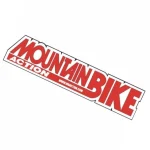Product Test: Atlas Crank Neck Brace


Atlas designs their neck braces to suit the demanding needs of racers. Their braces have been developed over three years with the help of a team of engineers, biomechanical experts, and some of the fastest racers in the bicycle and motocross industries.
Tech features:
The Crank is the bicycle-specific brace from Atlas, but it works exactly the same way the motorcycle braces do. In an impact, the Atlas brace disperses energy away from the neck and back. The Atlas is the first non-rigid neck brace on the market and basically works like a leaf spring, allowing the brace to flex as force is di- rected through the chest supports. This innovative suspension system can also help to reduce some forces transferred through the helmet, head and chest by distributing them through the brace.
The Atlas brace is available in three sizes and two colors. The black and white base colors can be customized with seven different graphics kits to match any riding-kit color scheme. The Crank brace is available through Atlas’ website for $329. Our medium-size test brace weighed 2 pounds, 1 ounce.


Test results:
Atlas is all about simplicity and performance. The Crank features a convenient, slip-over-the-head construction that avoids the hassle of messing with clips or hinges. There is also an easy-to-find, bright-red pin that paramedics can pull to remove the brace in an emergency.
On our first test rides with the Crank, we wore the large brace, which was a big mistake. Our skinny-chested crewers had neglected the most important step in purchasing a neck brace: getting the fit right. A quick chest measurement proved we were indeed using the wrong size, so we switched to the medium brace. Do yourself a favor and use a tape measure before you ever click the “buy” button on Atlas’ website.
While this brace has a lot in common with the original moto brace, it does have some bicycle-specific features. Since bicycle helmets typically have a lower profile than their moto counterparts, the Crank comes with additional padding to raise the profile of the brace and add protection. Our range of motion was slightly restricted, but it never really felt like the higher profile got in the way.
When we finally hit the trails wearing the right-size brace, we found it quite comfortable. It was a bit heavy at 2 pounds, but the well-thought-out ergonomics made the weight less noticeable. The over-the-head, slip-fit design is nice, but, then again, we never had any trouble with the clips and hinges on the competition’s neck braces.
We can’t speculate about the effectiveness of any protective product, whether it’s a neck brace, helmet, knee pad or glove, because there are too many variables involved. We can report that the Crank brace is comfortable to ride in and fits nicely, and the $300 price tag is attractive.





